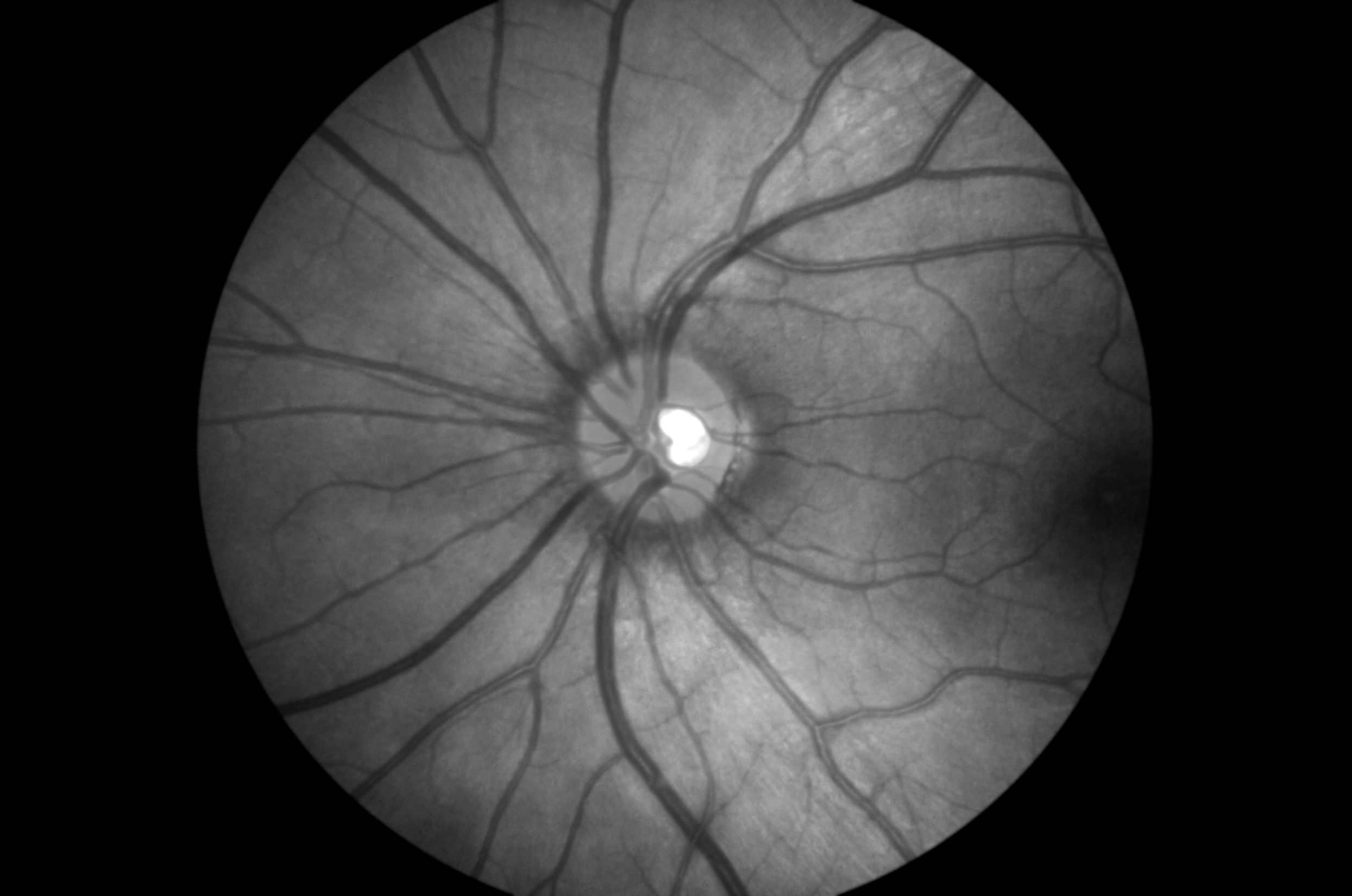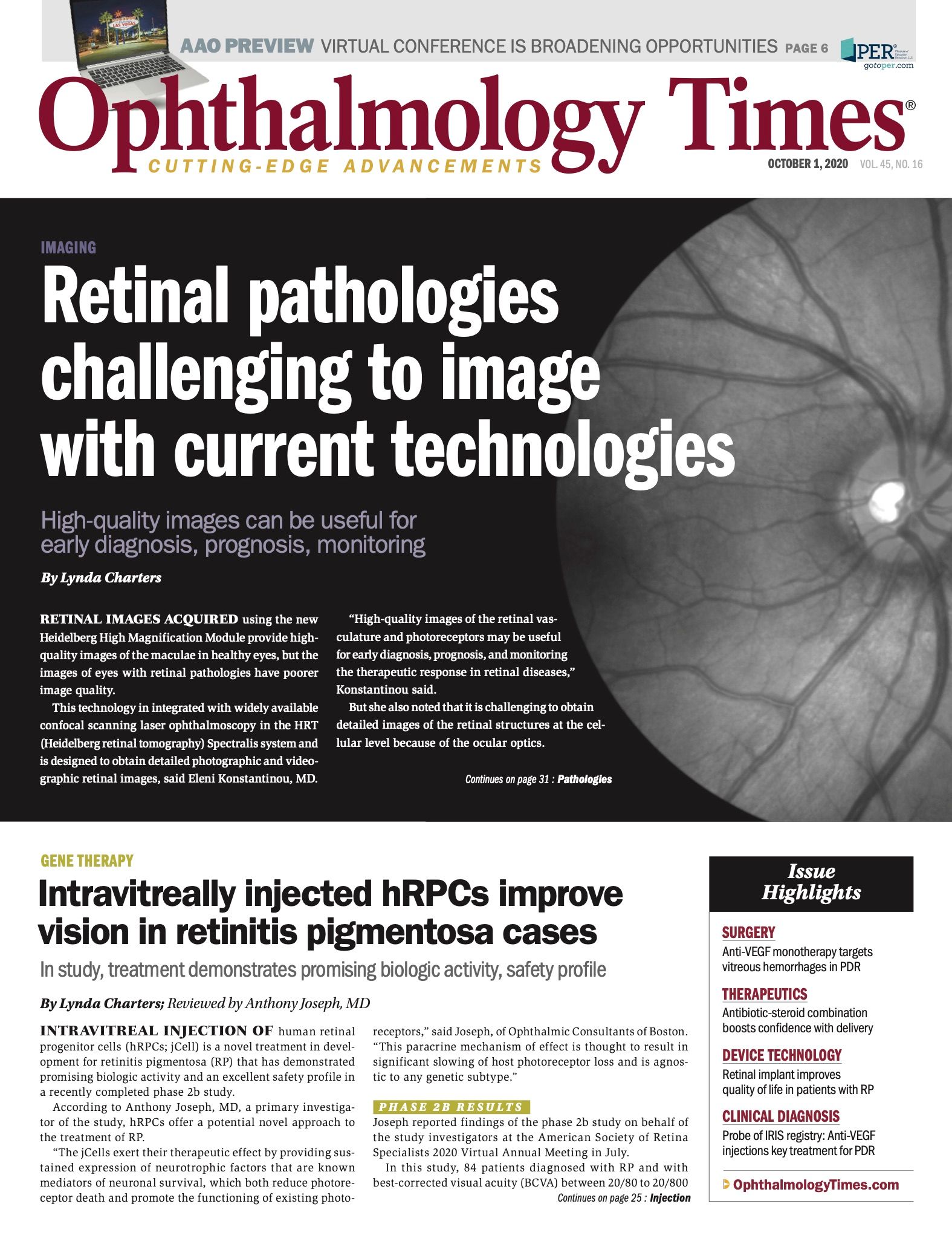Publication
Article
Digital Edition
Retinal pathologies challenging to image with current technologies
Author(s):
High-quality images can be useful for early diagnosis, prognosis, monitoring

Retinal images acquired using the new Heidelberg Engineering High Magnification Module provide high-quality images of the maculae in healthy eyes, but the images of eyes with retinal pathologies have poorer image quality.
This technology is integrated with widely available confocal scanning laser ophthalmoscopy (cSLO) in the Spectralis OCT system and is designed to obtain detailed photographic and videographic retinal images, said Eleni Konstantinou, MD.
“High-quality images of the retinal vasculature and photoreceptors may be useful for early diagnosis, prognosis, and monitoring the therapeutic response in retinal diseases,” Konstantinou said.
But she also noted that it is challenging to obtain detailed images of the retinal structures at the cellular level because of the ocular optics.
Related: New imaging modalities offering bold, noninvasive, real-time monitoring of retinal diseases
Pilot study
Konstantinou and colleagues conducted a pilot study to evaluate how well the platform performs when visualizing the retinal photoreceptor layer, retinal nerve fiber layer (RNFL), and superficial vasculature in healthy eyes and in those with retinal pathologies.
Thirty-two eyes, 16 with healthy maculae and 16 with pathologic maculae, were included. Both groups were imaged in vivo using the still and video platform modes, Konstantinou said.
The images were classified based on their quality: Good was defined as visualizing the photoreceptors; average, not visualizing the photoreceptors; and poor, showing no identifiable structures.
The results indicated that in 12 of the healthy eyes (mean subject age, 34.6 years; mean best-corrected visual acuity, 20/20; refractive error range, plano –7.0 D), the images were classified as having good image quality—3 as average and 1 as poor.
Related: Putting to practice retina innovations amid a pandemic
In the 16 eyes with a macular pathology (mean patient age, 58.7 years; best-corrected visual acuity, 20/20 to 20/400), 2 images were classified as good, 9 as average, and 5 as poor.
These patients had epiretinal membranes (RM), age-related macular degeneration (AMD), central serous chorioretinopathy (CSC), nonproliferative diabetic retinopathy, branch retinal vein occlusion, diabetic macular edema, and macular edema.
Konstantinou noted that in the healthy maculae, there was better resolution of the parafoveal photoreceptors compared with the images of patients with CSC in which there was poor resolution of the fovea, parafovea, and perifoveal photoreceptors.
In patients with an ERM, the striae could be visualized but the photoreceptors were obscured. In patients with AMD, the receptors were barely visible.
Related: Characterizing localized retinal layer changes in AMD
“When assessing healthy eyes, the new module satisfactorily imaged the RNFL and superficial vasculature but could not visualize the photoreceptors in all eyes,” investigators concluded. “Generally, the image quality of the maculae with a pathology was limited, and the photoreceptor mosaic could not be resolved clearly in most images. Specific steps are needed to acquire good-quality images. Further studies are needed to clarify the imaging ability of this new module.”
Read more by Lynda Charters
--
Eleni Konstantinou, MD
e: eleni_konstantinou@meei.harvard.edu
Konstantinou has no financial interest in this subject matter. She was at the New England Eye Center at Tufts University School of Medicine in Boston, Massachusetts, at the time of this presentation.

Newsletter
Don’t miss out—get Ophthalmology Times updates on the latest clinical advancements and expert interviews, straight to your inbox.





